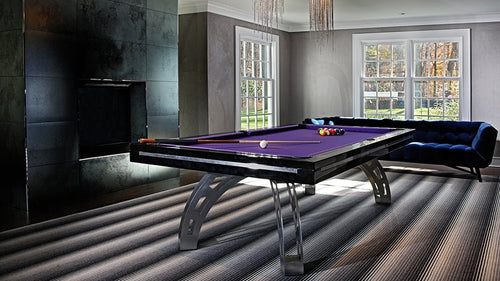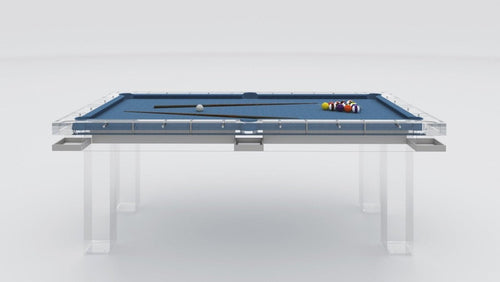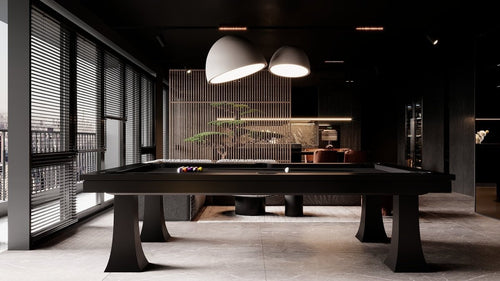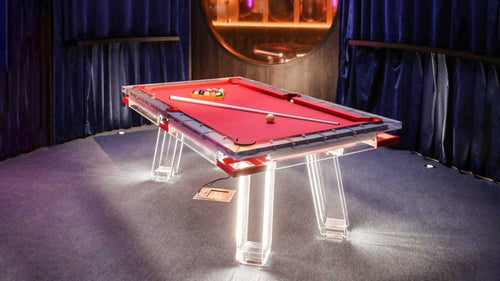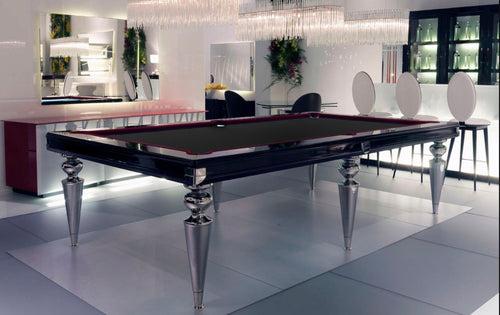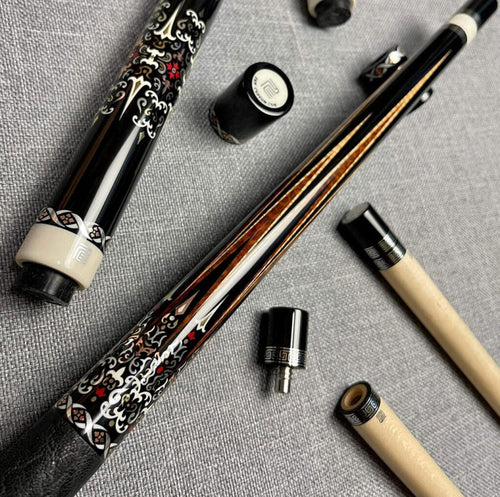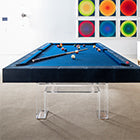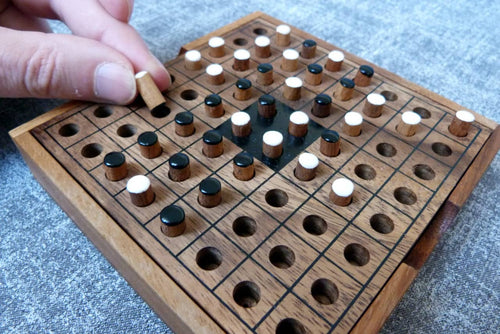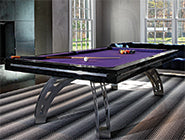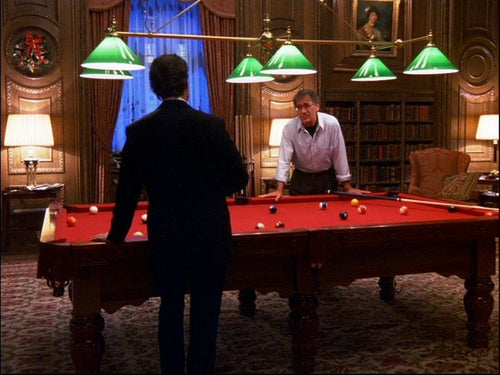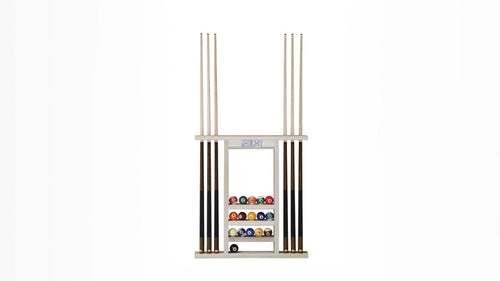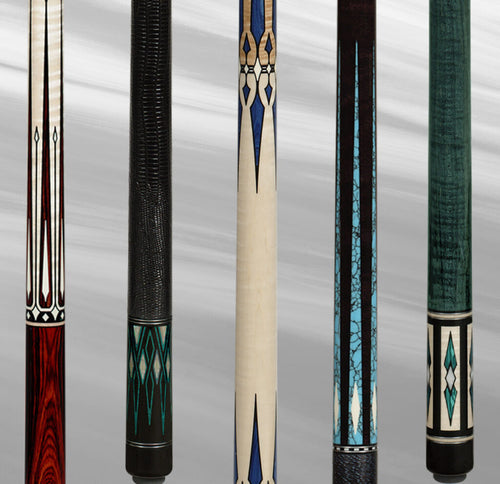Enjoy our modern designs
Spin looks like magic until you know where to hit and what the cloth does. Here are the simple rules that make shots predictable.
Spin is just physics in disguise. Where you strike the cue ball, how fast you hit, and how grabby the cloth is will decide everything after contact. Learn the small set of rules below and you’ll stop guessing and start calling the path.
Spin basics: where you hit
The cue tip hits at a point, not a “general area.” Move that point and you change the shot:
- Center — ball slides first, then rolls.
- Above center — rolls sooner (topspin).
- Below center — drags then pulls back after contact (draw).
- Left/right — sideways rotation (English).
Limits that matter: the farthest safe offset is roughly half the ball’s radius (past that you miscue). For instant natural roll, strike about 40% above center. For most reliable speed control, use about 20% above center.
From sliding to rolling
After a center hit, the cue ball slides on the felt before it grabs and starts rolling. Slick/new cloth = longer slide. Sticky or humid cloth = shorter slide. That’s why the same stun shot behaves differently on different tables.
Throw: why object balls drift
Sometimes the object ball (OB) doesn’t go exactly where you aimed. That sideways nudge is throw—friction between the balls during the brief contact.
- Cut throw: slow speed + about a half-ball cut can push the OB off by roughly an inch per foot (~5°).
- Spin throw: on a straight or slight cut, medium speed with about “half” sidespin can also shove the OB offline.
Neutralize big throw by using a touch more speed or a splash of opposite (inside) spin. Or plan for it and aim a hair fuller/thinner—your choice.
Squirt, swerve, and “squerve”
- Squirt: the cue ball’s initial sideways jump opposite your sidespin.
- Swerve: while sliding, spin plus friction curves it back.
- Squerve: what you actually see—the net curve (squirt minus swerve).
Harder strokes curve less. A higher cue butt (more elevation) curves more. Every shaft/tip combo has its own “fingerprint,” so build feel on your table, not someone else’s YouTube clip.
Rails and English
- Running English (spin helping the rebound) = wider angle off the cushion.
- Check English (spin fighting the rebound) = shorter angle.
- A small dose of inside English can cancel the natural “running” effect and keep routes predictable on multi-rail paths.
Quick rules of thumb
- Max practical offset without miscues ≈ ½ radius.
- Instant natural roll ≈ ~40% high.
- Best speed control ≈ ~20% high.
- Throw at slow speed can be ~1″ per foot of OB travel near a half-ball cut.
- Slick cloth = longer slide; sticky/humid cloth = shorter slide.
- Harder hit = less visible curve; more cue elevation = more curve.


